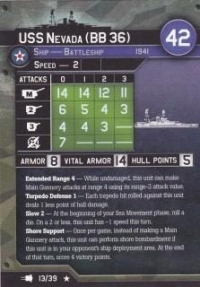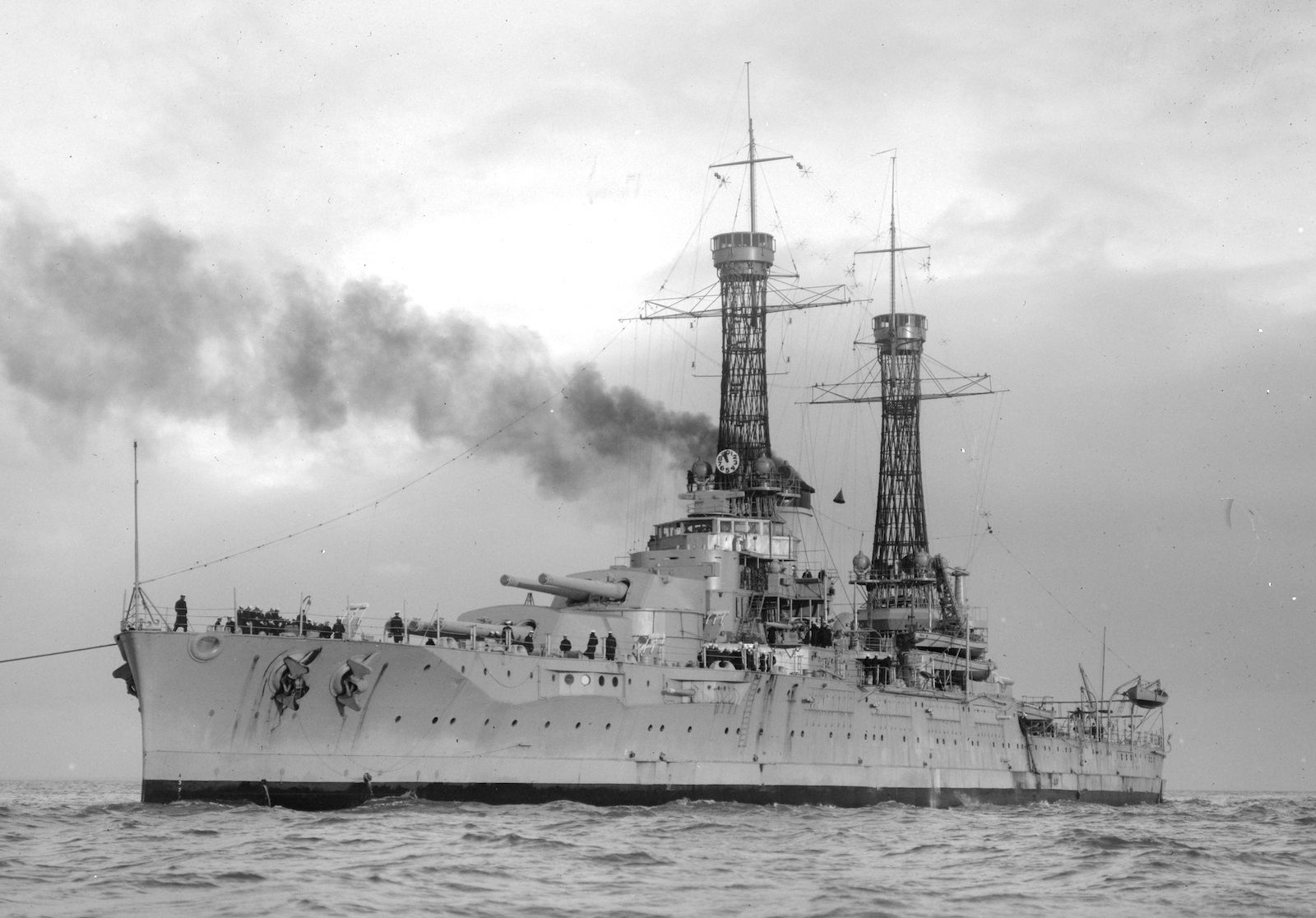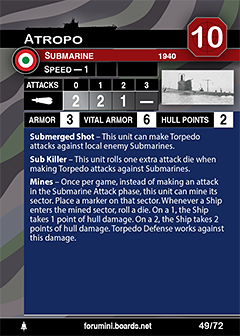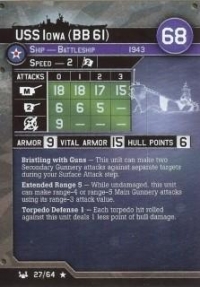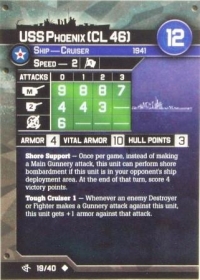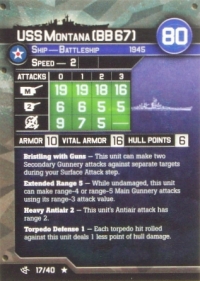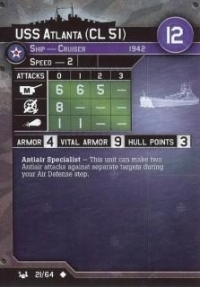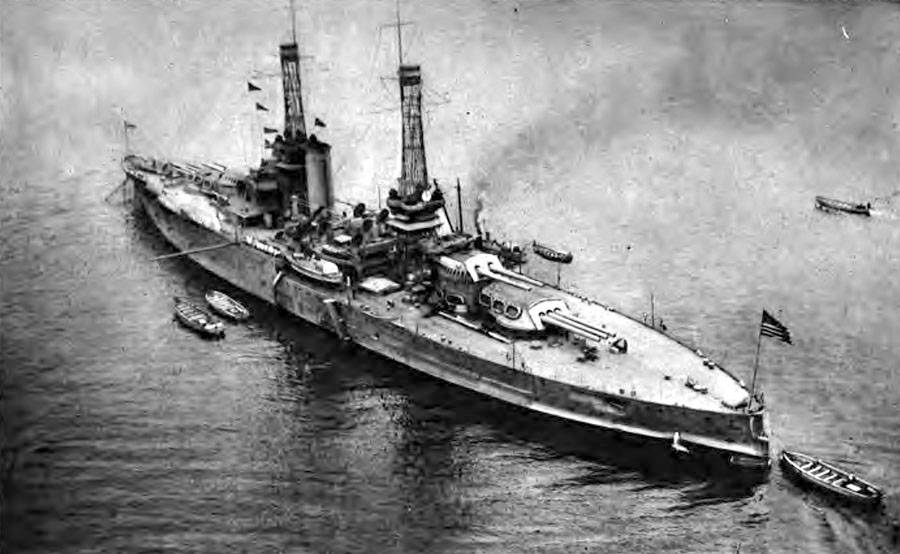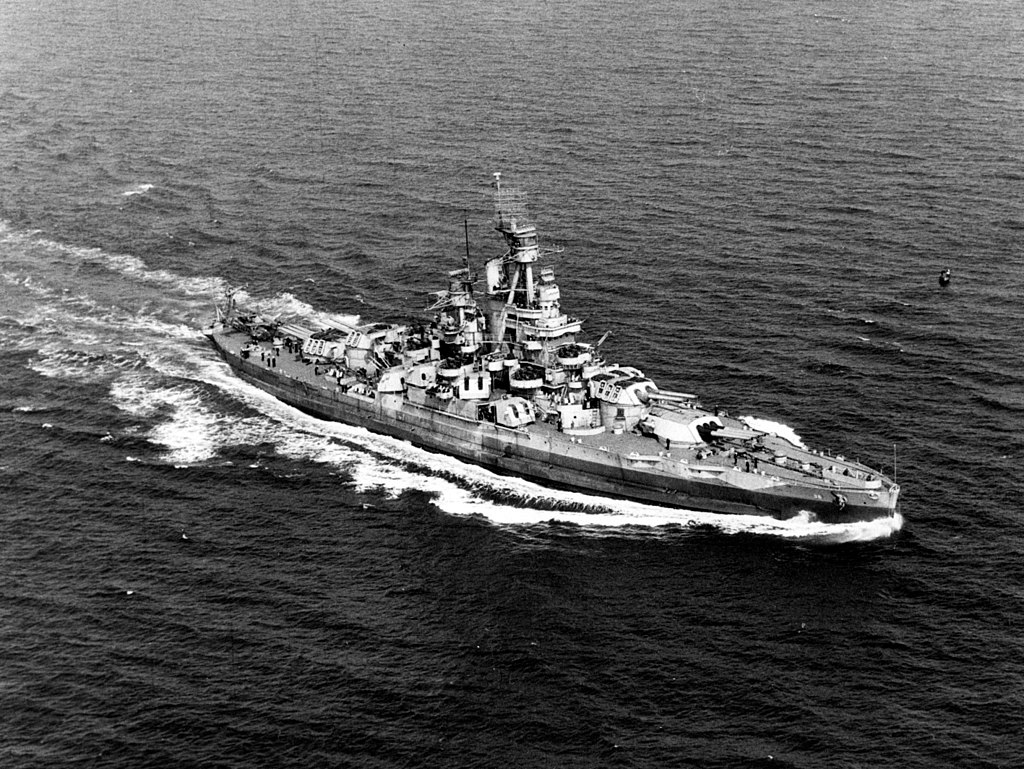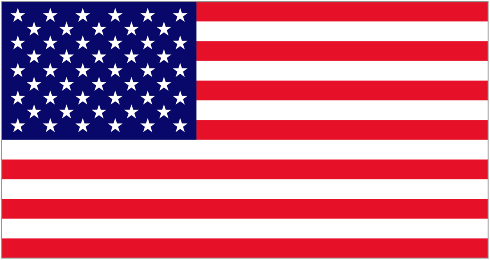Prototype: USS Nevada (BB-36), the second United States Navy ship to be named after the 36th state, was the lead ship of the two Nevada-class battleships. Launched in 1914, Nevada was a leap forward in dreadnought technology; four of her new features would be included on almost every subsequent US battleship: triple gun turrets,[c] oil in place of coal for fuel, geared steam turbines for greater range, and the "all or nothing" armor principle. These features made Nevada, alongside its sister ship Oklahoma, the first US Navy "standard-type" battleships.
Nevada served in both World Wars. During the last few months of World War I, Nevada was based in Bantry Bay, Ireland, to protect supply convoys that were sailing to and from Great Britain. In World War II, it was one of the battleships trapped when the Japanese attacked Pearl Harbor. Nevada was the only battleship to get underway during the attack, making the ship "the only bright spot in an otherwise dismal and depressing morning" for the United States. Still, it was hit by one torpedo and at least six bombs while steaming away from Battleship Row, forcing the crew to beach the stricken ship on a coral ledge. The ship continued to flood and eventually slid off the ledge and sunk to the harbor floor. Nevada was subsequently salvaged and modernized at Puget Sound Navy Yard, allowing it to serve as a convoy escort in the Atlantic and as a fire-support ship in five amphibious assaults (the invasions of Attu, Normandy, Southern France, Iwo Jima, and Okinawa).
At the end of World War II, the Navy decided that Nevada was too old to be retained, so they assigned it to be a target ship in the atomic experiments at Bikini Atoll in July 1946 (Operation Crossroads). The ship was hit by the blast from the first atomic bomb, Able, and was left heavily damaged and radioactive. Unfit for further service, Nevada was decommissioned on 29 August 1946 and sunk for naval gunfire practice on 31 July 1948.
Nevada served in both World Wars. During the last few months of World War I, Nevada was based in Bantry Bay, Ireland, to protect supply convoys that were sailing to and from Great Britain. In World War II, it was one of the battleships trapped when the Japanese attacked Pearl Harbor. Nevada was the only battleship to get underway during the attack, making the ship "the only bright spot in an otherwise dismal and depressing morning" for the United States. Still, it was hit by one torpedo and at least six bombs while steaming away from Battleship Row, forcing the crew to beach the stricken ship on a coral ledge. The ship continued to flood and eventually slid off the ledge and sunk to the harbor floor. Nevada was subsequently salvaged and modernized at Puget Sound Navy Yard, allowing it to serve as a convoy escort in the Atlantic and as a fire-support ship in five amphibious assaults (the invasions of Attu, Normandy, Southern France, Iwo Jima, and Okinawa).
At the end of World War II, the Navy decided that Nevada was too old to be retained, so they assigned it to be a target ship in the atomic experiments at Bikini Atoll in July 1946 (Operation Crossroads). The ship was hit by the blast from the first atomic bomb, Able, and was left heavily damaged and radioactive. Unfit for further service, Nevada was decommissioned on 29 August 1946 and sunk for naval gunfire practice on 31 July 1948.
Class History: The Nevada-class battleships were the United States Navy‘s first battleship design equipped with triple gun turrets (the Colorado class would be the last to carry twin turrets, armed with dual-mounted 16-inch guns), as well as introducing the "all or nothing" armor scheme in American capital ship design, in which protection of vital areas was optimized against heavy caliber guns, leaving other parts of the ship essentially unprotected. The Nevadas also introduced completely oil-fired propulsion. In armament, armor, and propulsion the Nevada class represented a considerable evolution in battleship design and, in being designed specifically to fight at extreme gunnery ranges, was actually well ahead of its time. They would be followed by the Pennsylvania-class battleships. Two ships of this class were constructed: Nevada (BB-36) and Oklahoma (BB-37).
The Nevadas were the first Standard-type battleships produced by the U.S. Navy[7] Along with the Pennsylvania, New Mexico, Tennessee and Colorado classes, the standard type offered a battle line of vessels homogeneous in long-range gunnery, speed, tactical radius and damage control. The essential characteristics of the standard type were oil fuel, "all or nothing" armor, the arrangement of the main battery into four turrets, and significant deck armor providing protection against shells fired from long range. This combination of features made the Nevadas the prototype of the modern battleship. For example, the protection of the standard class battleships was not significantly revised after the Battle of Jutland, while other Navies tended to have different pre- and post-Jutland designs.
Active in the Atlantic Ocean before and during World War I, the Nevadas were deployed to protect Allied supply lines in the European war zone in 1918. Their service continued after the "Great War", though by the early 1920s they were the oldest of the main Battle Fleet units. Both were extensively modernized between 1927 and 1929. Oklahoma was sunk during the attack on Pearl Harbor in 1941 and was a total loss. Nevada beached herself during this raid to prevent blocking the harbor entrance after receiving damage, and was salvaged and modernized. She provided gunfire support for amphibious operations in the European and Pacific theaters, which included shelling German shore batteries on D-Day along with USS Texas and USS Arkansas. Considered too old at the end of World War II to be kept in active service, Nevada was used as a target ship for nuclear and conventional weapons from 1946 to 1948, proving that her protection scheme was sound as she remained afloat for further target use after nuclear weapons tests in Operation Crossroads.
The Nevadas were the first Standard-type battleships produced by the U.S. Navy[7] Along with the Pennsylvania, New Mexico, Tennessee and Colorado classes, the standard type offered a battle line of vessels homogeneous in long-range gunnery, speed, tactical radius and damage control. The essential characteristics of the standard type were oil fuel, "all or nothing" armor, the arrangement of the main battery into four turrets, and significant deck armor providing protection against shells fired from long range. This combination of features made the Nevadas the prototype of the modern battleship. For example, the protection of the standard class battleships was not significantly revised after the Battle of Jutland, while other Navies tended to have different pre- and post-Jutland designs.
Active in the Atlantic Ocean before and during World War I, the Nevadas were deployed to protect Allied supply lines in the European war zone in 1918. Their service continued after the "Great War", though by the early 1920s they were the oldest of the main Battle Fleet units. Both were extensively modernized between 1927 and 1929. Oklahoma was sunk during the attack on Pearl Harbor in 1941 and was a total loss. Nevada beached herself during this raid to prevent blocking the harbor entrance after receiving damage, and was salvaged and modernized. She provided gunfire support for amphibious operations in the European and Pacific theaters, which included shelling German shore batteries on D-Day along with USS Texas and USS Arkansas. Considered too old at the end of World War II to be kept in active service, Nevada was used as a target ship for nuclear and conventional weapons from 1946 to 1948, proving that her protection scheme was sound as she remained afloat for further target use after nuclear weapons tests in Operation Crossroads.
Country: The U.S. is a country of 50 states covering a vast swath of North America, with Alaska in the northwest and Hawaii extending the nation’s presence into the Pacific Ocean. Major Atlantic Coast cities are New York, a global finance and culture center, and capital Washington, DC. Midwestern metropolis Chicago is known for influential architecture and on the west coast, Los Angeles' Hollywood is famed for filmmaking.
Item created by: Lethe on 2015-05-31 17:46:30. Last edited by gdm on 2019-07-02 16:59:23
If you see errors or missing data in this entry, please feel free to log in and edit it. Anyone with a Gmail account can log in instantly.
If you see errors or missing data in this entry, please feel free to log in and edit it. Anyone with a Gmail account can log in instantly.


